BMW i4 vs CUPRA Born – Performance, range & efficiency compared
Two cars, one duel: BMW i4 meets CUPRA Born.
Which one wins in performance, efficiency and value for money? Find out now!
Electric Titans: BMW i4 vs CUPRA Born
In the rapidly evolving realm of electric vehicles, two newcomers have emerged as strong contenders in the hatchback segment: the BMW i4 and the CUPRA Born. Both embody innovation, style, and performance, but which stands out in this face-off?
Design and Dimensions
The BMW i4 exhibits the traditional elegance associated with its brand, boasting a length of 4783 mm, width of 1852 mm, and height of 1448 mm, giving it a sleek look on the road. In contrast, the CUPRA Born is more compact with dimensions of 4324 mm in length, 1809 mm in width, and a height of 1540 mm, offering a dynamic and sporty aesthetic.
Under the Hood: Engine and Performance
Both vehicles feature an electric engine coupled with an automatic transmission, yet differ significantly in performance statistics. The i4 offers a power spectrum ranging from 286 HP to a robust 544 HP, while the CUPRA Born's range extends from 231 HP to 326 HP. It translates into impressive acceleration, with the i4 zipping from 0 to 100 km/h in a breathtaking 3.9 seconds in its top variant, whereas the Born achieves this in 5.6 seconds.
Efficiency and Range
In terms of efficiency, both vehicles exhibit a competitive consumption rate, with the i4 consuming between 15.6 and 18 kWh/100 km depending on the variant, while the Born remains efficient at 14.9 to 15.9 kWh/100 km. On a full charge, the i4 triumphs with an electric range stretching up to 582 km, compared to the Born's maximum range of 555 km. A significant factor for those prioritizing long-distance travel.
Battery and Charging
The BMW i4 is equipped with battery capacities of 67.1 kWh and 81.3 kWh, aligning closely with the CUPRA Born's offerings of 60 kWh, 77 kWh, and 79 kWh. These figures, combined with their efficiency, place them among the leading options for electric hatchbacks in the market.
Interior and Cargo Space
Inside, both vehicles comfortably seat five people. The i4 offers a more generous trunk capacity of 470 liters compared to the Born’s 385 liters, potentially appealing more to those needing additional cargo space.
Safety and Technology
Both vehicles adhere to high safety standards, boasting an A-class CO2 efficiency and a range of advanced driver-assistance technologies. Their zero g/km CO2 emissions reflect a commitment to sustainability and a greener future.
Conclusion
The BMW i4 and CUPRA Born each bring unique strengths to the table. The i4 stands out with superior range and speed, appealing to those who value performance and longer journeys. The Born, however, balances efficiency and a compact design for city driving. As always, the final choice will depend on personal priorities, but both deliver outstanding entries in the electric vehicle domain.
Here’s where it gets real: The technical differences in detail
Costs and Efficiency: Looking at overall running costs, both models reveal some interesting differences in everyday economy.
CUPRA Born has a decisively advantage in terms of price – it starts at 34700 £, while the BMW i4 costs 49400 £. That’s a price difference of around 14700 £.
In terms of energy consumption, the advantage goes to the BMW i4: with 14.70 kWh per 100 km, it’s barely noticeable more efficient than the CUPRA Born with 14.90 kWh. That’s a difference of about 0.20 kWh.
As for range, the BMW i4 performs minimal better – achieving up to 613 km, about 19 km more than the CUPRA Born.
Engine and Performance: Power, torque and acceleration are the classic benchmarks for car enthusiasts – and here, some clear differences start to show.
When it comes to engine power, the BMW i4 has a decisively edge – offering 601 HP compared to 326 HP. That’s roughly 275 HP more horsepower.
In acceleration from 0 to 100 km/h, the BMW i4 is decisively quicker – completing the sprint in 3.70 s, while the CUPRA Born takes 5.60 s. That’s about 1.90 s faster.
In terms of top speed, the BMW i4 performs a bit better – reaching 225 km/h, while the CUPRA Born tops out at 200 km/h. The difference is around 25 km/h.
There’s also a difference in torque: the BMW i4 pulls noticeable stronger with 795 Nm compared to 545 Nm. That’s about 250 Nm difference.
Space and Everyday Use: Whether family car or daily driver – which one offers more room, flexibility and comfort?
Both vehicles offer seating for 5 people.
In curb weight, the CUPRA Born is a bit lighter – 1828 kg compared to 2070 kg. The difference is around 242 kg.
In terms of boot space, the BMW i4 offers to a small extent more room – 470 L compared to 385 L. That’s a difference of about 85 L.
In maximum load capacity, the BMW i4 performs hardly perceptible better – up to 1290 L, which is about 23 L more than the CUPRA Born.
When it comes to payload, BMW i4 minimal takes the win – 480 kg compared to 452 kg. That’s a difference of about 28 kg.
Our conclusion: The BMW i4 proves to be leaves the rival little chance and thus becomes our DriveDuel Champion!
Overall, BMW i4 is the better all-rounder in this comparison.
BMW i4
The BMW i4 beautifully merges the dynamism of a saloon with the efficiency of an electric vehicle, offering a truly exhilarating driving experience. Its design seamlessly blends elegance and athleticism, highlighting BMW's dedication to both aesthetics and performance. Inside, the i4 boasts a high-tech cockpit that harmonises luxury with intuitive technology, allowing drivers to stay connected while on the move.
details @ press.bmwgroup.com
@ press.bmwgroup.com
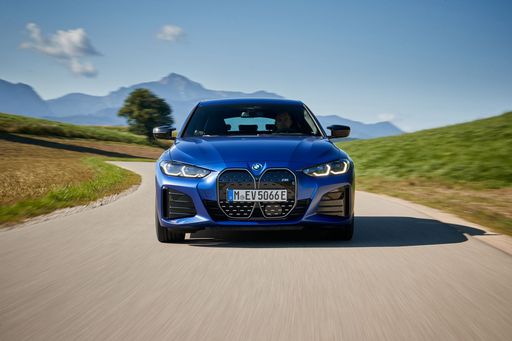 @ press.bmwgroup.com
@ press.bmwgroup.com
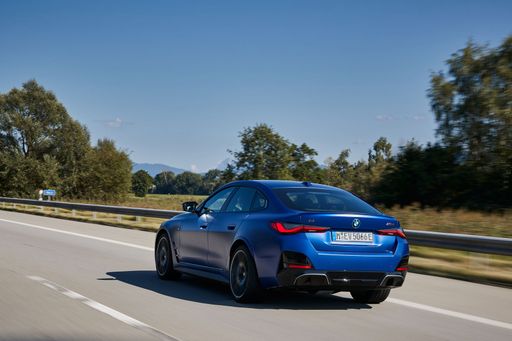 @ press.bmwgroup.com
@ press.bmwgroup.com
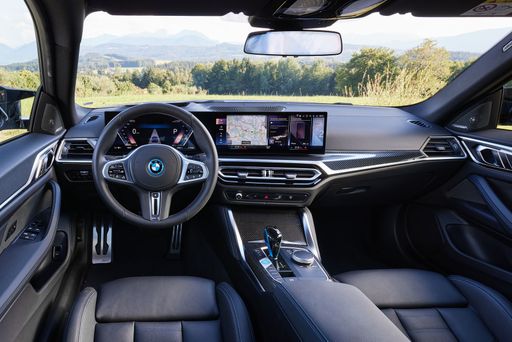 @ press.bmwgroup.com
@ press.bmwgroup.com
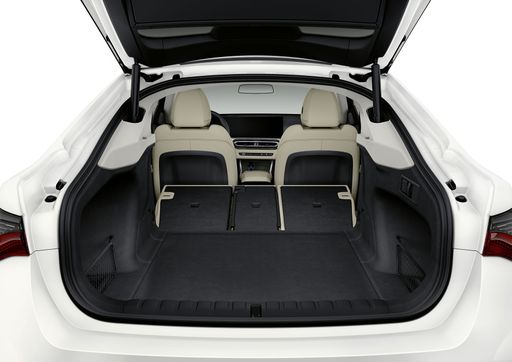 @ press.bmwgroup.com
@ press.bmwgroup.com
CUPRA Born
The CUPRA Born stands out as a striking addition to the realm of electric vehicles, merging innovative design with dynamic performance. Its sleek, aerodynamic profile is complemented by an interior that prioritises both driver comfort and cutting-edge technology. With sustainability in mind, this electric hatchback embodies a new era of responsible yet exhilarating driving.
details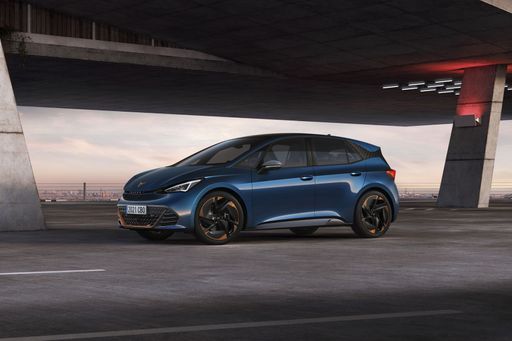 @ seat-mediacenter.com
@ seat-mediacenter.com
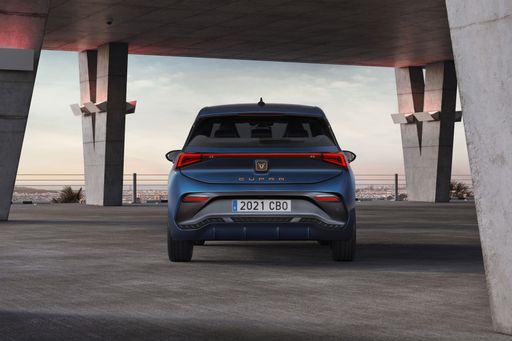 @ seat-mediacenter.com
@ seat-mediacenter.com
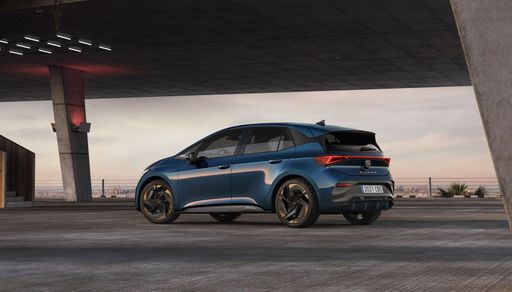 @ seat-mediacenter.com
@ seat-mediacenter.com
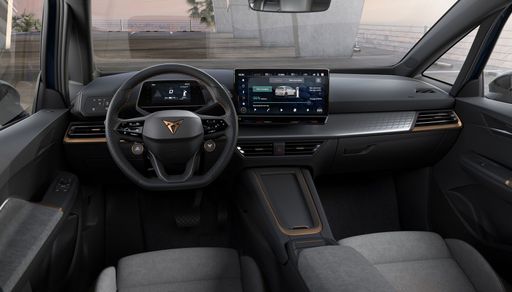 @ seat-mediacenter.com
@ seat-mediacenter.com
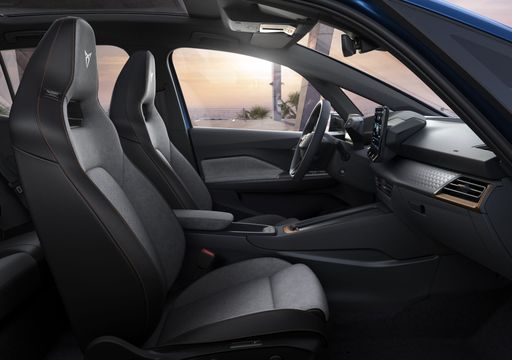 @ seat-mediacenter.com
@ seat-mediacenter.com
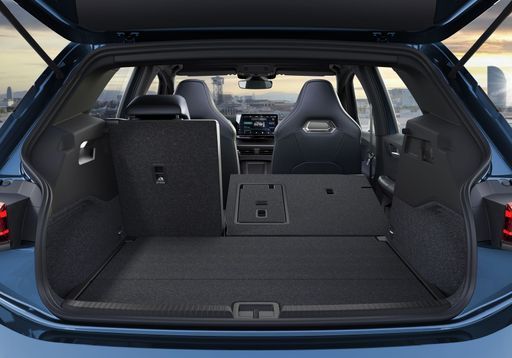 @ seat-mediacenter.com
@ seat-mediacenter.com

|

|
|
|
|
Costs and Consumption |
|
|---|---|
|
Price
49400 - 62500 £
|
Price
34700 - 45300 £
|
|
Consumption L/100km
-
|
Consumption L/100km
-
|
|
Consumption kWh/100km
14.7 - 16.7 kWh
|
Consumption kWh/100km
14.9 - 16 kWh
|
|
Electric Range
514 - 613 km
|
Electric Range
427 - 594 km
|
|
Battery Capacity
67.1 - 81.3 kWh
|
Battery Capacity
60 - 79 kWh
|
|
co2
0 g/km
|
co2
0 g/km
|
|
Fuel tank capacity
-
|
Fuel tank capacity
-
|
Dimensions and Body |
|
|---|---|
|
Body Type
Hatchback
|
Body Type
Hatchback
|
|
Seats
5
|
Seats
5
|
|
Doors
5
|
Doors
5
|
|
Curb weight
2070 - 2285 kg
|
Curb weight
1828 - 1999 kg
|
|
Trunk capacity
470 L
|
Trunk capacity
385 L
|
|
Length
4783 mm
|
Length
4324 mm
|
|
Width
1852 mm
|
Width
1809 mm
|
|
Height
1448 mm
|
Height
1540 mm
|
|
Max trunk capacity
1290 L
|
Max trunk capacity
1267 L
|
|
Payload
445 - 480 kg
|
Payload
431 - 452 kg
|
Engine and Performance |
|
|---|---|
|
Engine Type
Electric
|
Engine Type
Electric
|
|
Transmission
Automatic
|
Transmission
Automatic
|
|
Transmission Detail
Reduction Gearbox
|
Transmission Detail
Reduction Gearbox
|
|
Drive Type
Rear-Wheel Drive, All-Wheel Drive
|
Drive Type
Rear-Wheel Drive
|
|
Power HP
286 - 601 HP
|
Power HP
204 - 326 HP
|
|
Acceleration 0-100km/h
3.7 - 6 s
|
Acceleration 0-100km/h
5.6 - 7.7 s
|
|
Max Speed
190 - 225 km/h
|
Max Speed
160 - 200 km/h
|
|
Torque
400 - 795 Nm
|
Torque
265 - 545 Nm
|
|
Number of Cylinders
-
|
Number of Cylinders
-
|
|
Power kW
210 - 442 kW
|
Power kW
150 - 240 kW
|
|
Engine capacity
-
|
Engine capacity
-
|
General |
|
|---|---|
|
Model Year
2025
|
Model Year
2024 - 2025
|
|
CO2 Efficiency Class
A
|
CO2 Efficiency Class
A
|
|
Brand
BMW
|
Brand
CUPRA
|
What drivetrain options does the BMW i4 have?
The BMW i4 is available as Rear-Wheel Drive or All-Wheel Drive.
The prices and data displayed are estimates based on German list prices and may vary by country. This information is not legally binding.
